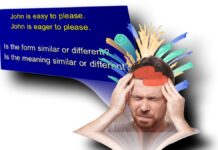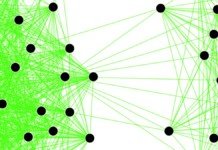Understanding graphics and visual aids is essential to reading comprehension, especially in academic and professional texts. Graphics and visual aids, such as charts, graphs, diagrams, maps, and photographs, are essential for presenting complex information clearly and concisely. Visual aids can illustrate concepts and data that might be difficult to understand through text alone. They can simplify complex ideas and assist in explaining relationships among data.
Graphics such as charts and graphs present data in a condensed form, allowing readers to grasp statistical information and trends quickly. Visual elements make a text more appealing and help maintain the reader’s interest, which is particularly helpful in educational materials. The human brain tends to process and remember visual information more efficiently than text, so visuals can improve retention and recall.
Graphics can clarify information in the text, emphasise important points, and provide examples that reinforce the message. Visual aids often complement the text, enabling readers to cross-reference written content with visual elements for better understanding. Including data or evidence in visual forms enables readers to analyse information critically and draw their own conclusions. People have different learning styles, and some individuals, particularly visual learners, may find they comprehend and retain information better when presented visually.
Examine the Title and Labels
Start by reading the graphic’s title and any labels or captions. This provides context and helps you understand what the graphic is about.
Read the Key or Legend
If the graphic includes a key or legend, read it carefully to understand the symbols or colours used and what they represent. This will help you interpret the information correctly.
Analyse the Components
Break down the graphic into its components (e.g., axes, data points, categories) and examine each part individually. Pay attention to the scale, units, and any patterns or trends.
Look for Trends and Patterns
Identify any trends, patterns, or relationships in the data presented. This might include upward or downward trends, clusters of data points, or correlations between variables.
Consider the Context
Think about how the graphic relates to the surrounding text or information. Visual aids are often used to support or illustrate critical points in the text, so understanding this relationship is crucial for comprehension.
Compare and Contrast
Compare the information in the graphic with other sources or your knowledge. This can help you verify the accuracy of the data and gain a deeper understanding of the topic.
Interpret Data Correctly
Be cautious of misinterpreting data or drawing incorrect conclusions. Double-check your understanding of the information presented and avoid making assumptions without evidence.
Seek Clarification if Necessary
If you’re unsure about any aspect of the graphic or if something doesn’t make sense, don’t hesitate to ask a teacher, peer, or other reliable source for clarification.
Practice with Different Types of Graphics
Familiarise yourself with various types of graphics, including bar graphs, pie charts, line graphs, diagrams, and maps. Practice interpreting different kinds of visual information to improve your skills over time.
Use Visual Aids to Enhance Understanding
Visual aids can often simplify complex concepts or make information easier to grasp. Take advantage of visual aids to supplement your understanding of textual information and enhance your overall comprehension.
By applying these strategies, one can develop the ability to interpret graphics and visual aids effectively, thereby improving reading comprehension and gaining deeper insights from the information presented.





























